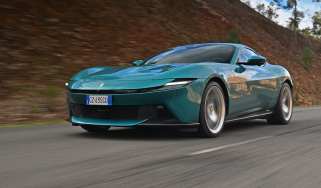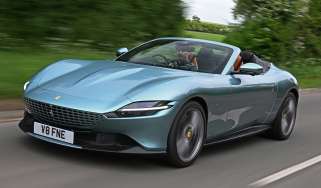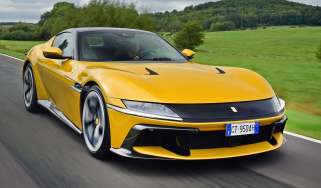Ferrari
Best convertible cars and cabriolets to buy 2026

Best convertible cars and cabriolets to buy 2026
Love the feeling of the wind in your hair while driving? These are the cars for you
New Ferrari F76 revealed, but you’ll never get to drive it

New Ferrari F76 revealed, but you’ll never get to drive it
Remember when NFTs were all the rage? Well here’s Ferrari’s digital offering…
One-off Ferrari SC40 pays tribute to the iconic F40

One-off Ferrari SC40 pays tribute to the iconic F40
The latest fully-bespoke Ferrari has been revealed, inspired by the F40, this is the SC40
Ferrari has shown me that EVs can be more than smartphones on wheels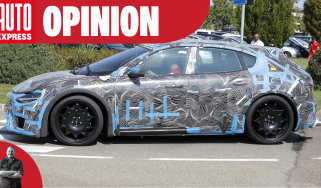

Ferrari has shown me that EVs can be more than smartphones on wheels
News reporter, Ellis Hyde thinks Ferrari’s take on the electric car formula will deliver something with a longer shelf life than the average EV
Ferrari Elettrica secrets revealed: the first electric Ferrari is less than a year away

Ferrari Elettrica secrets revealed: the first electric Ferrari is less than a year away
The Ferrari Elettrica will deliver more than 1,000bhp and a thrilling driving experience, but also what could be the comfiest ride of any Ferrari, eve…
Ferrari will keep its glorious V12 alive, and make it more powerful than ever

Ferrari will keep its glorious V12 alive, and make it more powerful than ever
Brand’s V6 and V8 engines will also continue to evolve, but EV plans are being dialled back slightly
A 2,000bhp electric Ferrari supercar? Boss says no!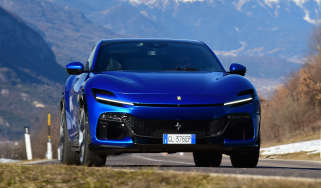

A 2,000bhp electric Ferrari supercar? Boss says no!
Ferrari promises its Elettrica EV will deliver driving thrills through its handling finesse rather than simply extreme power
Best new cars coming soon: all the big new car launches due in 2025, 2026 and beyond

Best new cars coming soon: all the big new car launches due in 2025, 2026 and beyond
Here are the most important new cars from Audi, BMW, Dacia, Ferrari, Ford, Skoda and more that you need to know about
New Ferrari 849 Testarossa: famous name, massive power and stunning looks

New Ferrari 849 Testarossa: famous name, massive power and stunning looks
The new Ferrari 849 Testatrossa's plug-in hybrid twin-turbocharged V8 is good for 1,035bhp
Fastest-accelerating cars 2025: world's quickest 0-60mph production cars

Fastest-accelerating cars 2025: world's quickest 0-60mph production cars
The definitive list of the fastest-accelerating production cars in the world, ranked by their official 0-60mph times.
Most expensive cars ever sold at auction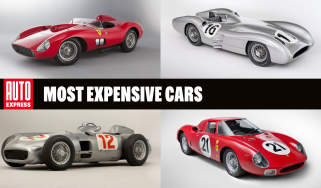

Most expensive cars ever sold at auction
The rarest and most desirable cars ever made fetch eye-watering sums when going under the hammer. These examples attracted the highest auction prices …
Best supercars on sale 2025

Best supercars on sale 2025
These cars are at the absolute pinnacle of performance, driving thrills and head-turning style…
Best luxury SUVs 2025

Best luxury SUVs 2025
Luxury SUVs combine the sophistication of a luxury car with the sheer practicality of an SUV. Here’s our pick of the current crop
New electric cars coming soon: the fresh EVs of 2025 and beyond

New electric cars coming soon: the fresh EVs of 2025 and beyond
The EV market is growing faster than ever, and these are the incoming cars to keep an eye on
Arrivederci Roma: new Ferrari Amalfi slots in as brand’s latest entry-level model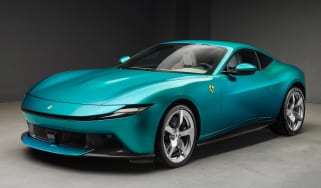

Arrivederci Roma: new Ferrari Amalfi slots in as brand’s latest entry-level model
A slick new look and more power are the headlines for Ferrari’s new baby, but it’s probably some simple new buttons that will get customers’ attention
Best cars for road trips - our top models for the ultimate driving adventure

Best cars for road trips - our top models for the ultimate driving adventure
Our experts pick their ideal road trip cars with everything from super-luxury saloons to high-powered supercars
Best hypercars 2025

Best hypercars 2025
Extraordinarily fast and exceedingly rare, these are the best hypercars of all-time
New hardcore Ferrari 296 Speciale is lightweight, fast and expensive

New hardcore Ferrari 296 Speciale is lightweight, fast and expensive
Ferrari’s next lightweight supercar will arrive in both coupé and open-top Aperta forms
Best four-seat sports cars to buy 2025

Best four-seat sports cars to buy 2025
If you want a sports car but need the practicality of four seats, there are some great four-seat sports car options out there right now
Fastest SUVs in the world 2025

Fastest SUVs in the world 2025
We run down the list of the fastest SUVs you can buy right now
Ferrari 296 Versione Speciale could add some F80-inspired tweaks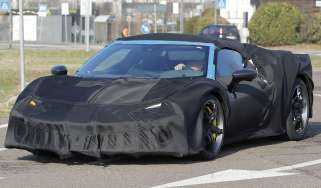

Ferrari 296 Versione Speciale could add some F80-inspired tweaks
The updated ‘baby’ Ferrari supercar has the Lamborghini Tememario in its sights
Best GT cars 2025: the top 10 grand tourers on sale 

Best GT cars 2025: the top 10 grand tourers on sale
If you want to cross continents in style and comfort, these are the best grand tourers (GT) to buy
Best performance cars to buy 2025

Best performance cars to buy 2025
Performance cars have reached new heights of speed and interaction - here’s a list of our ten favourites from the current crop
Best track day cars 2025

Best track day cars 2025
Whether you're looking to shave tenths off your lap time or simply want to have fun, these are the UK's best track day cars
Ferrari Roma replacement gets set to take on the Aston Martin Vantage

Ferrari Roma replacement gets set to take on the Aston Martin Vantage
The Maranello firm has been spotted testing its latest grand tourer
Stunning new Ferrari F80 arrives to resume hypercar head-to-head with McLaren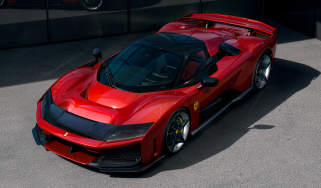

Stunning new Ferrari F80 arrives to resume hypercar head-to-head with McLaren
The new Ferrari F80 follows the Italian brand’s hypercar icons, and showcases a hi-tech future
Why doesn’t the new Ferrari F80 hypercar have a V12? Because a V6 is faster!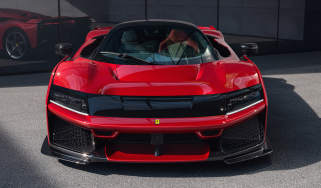

Why doesn’t the new Ferrari F80 hypercar have a V12? Because a V6 is faster!
The F80’s V6 engine is sure to upset some purists, but Ferrari insists it offers the best performance of all the options available
New Ferrari hypercar teased ahead of 17 October reveal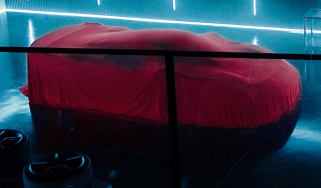

New Ferrari hypercar teased ahead of 17 October reveal
Ferrari’s as-yet-unnamed creation is the successor to the LaFerrari, Enzo, F50 and F40
New £336,500 Ferrari 12Cilindri has Aston Martin Vanquish in crosshairs

New £336,500 Ferrari 12Cilindri has Aston Martin Vanquish in crosshairs
Latest Maranello GT features 6.5-litre V12 that revs to 9,500rpm and produces 818bhp
Best handling cars

Best handling cars
Pure cornering bliss! Here are the best handling cars that money can buy
